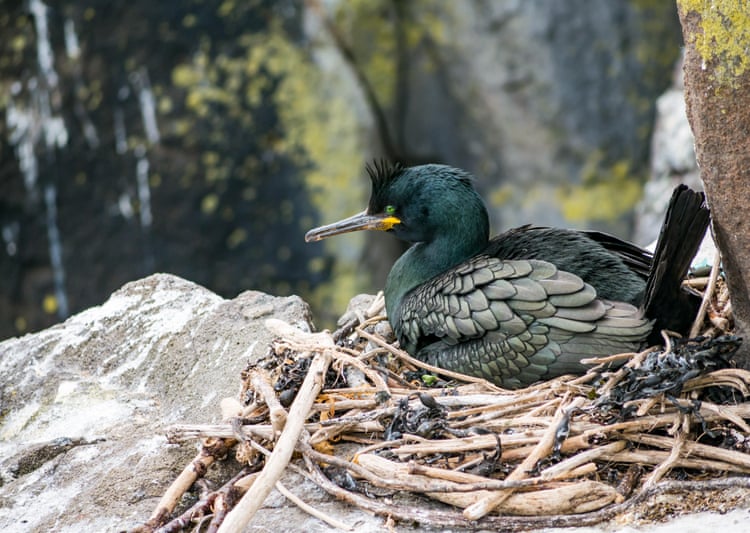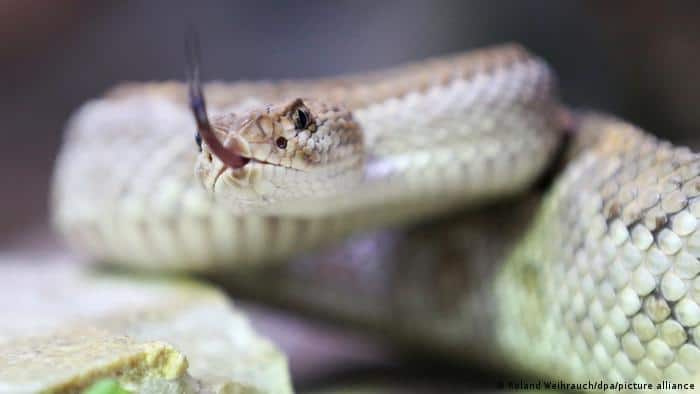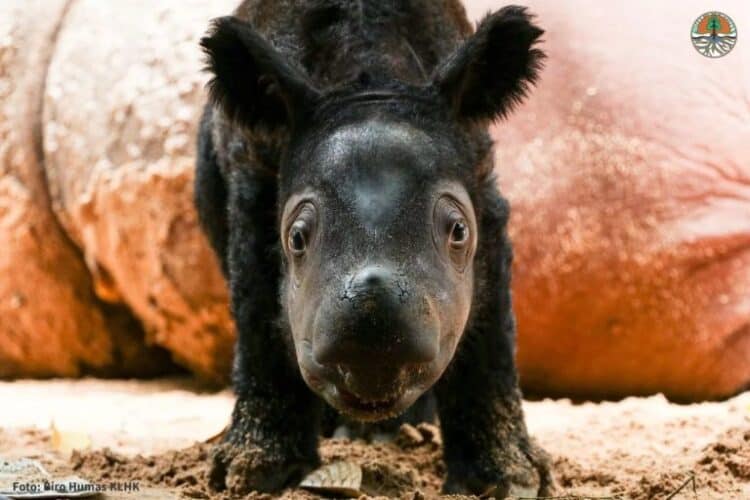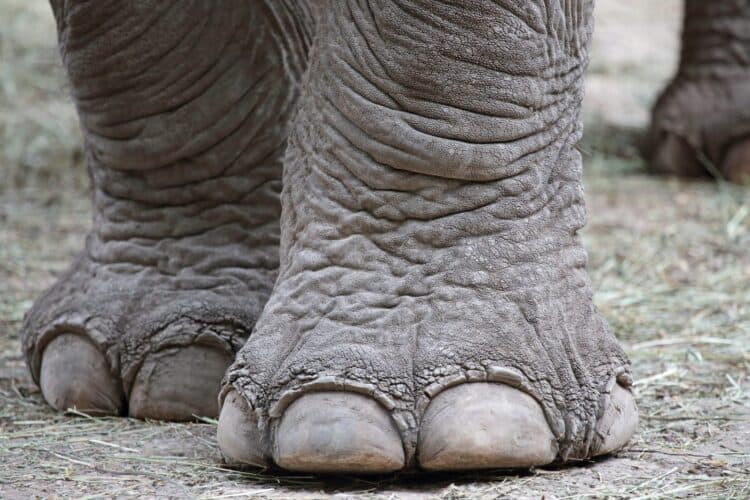A new study in PLOS ONE reveals a 76 percent reduction in Germany’s flying insect biomass over the past 27 years while another reports the country’s bird abundance has declined 15 percent in just over a decade.
While the causes behind the insect decline haven’t yet been conclusively studied, the PLOS ONE study suggests agricultural intensification like increased pesticide use may be contributing to the decline.
Neonicotinoid pesticides have been blamed for bee declines, and studies also link them to declines in aquatic insect communities. Many flying insects have aquatic life stages.
More research is underway to better understand the causes and ramifications of such a big decline in flying insect biomass.
Germany’s flying insect biomass has dropped 76 percent in the past 27 years, according to a study published last week in PLOS ONE. The findings have stunned biologists around the world and are prompting concern about potentially disastrous ecological consequences as another study finds the country lost 15 percent of its birds in just over a decade.
The study was conducted by researchers at institutions in Germany and the Netherlands. Over the course of nearly 30 years, they collected flying insects within protected areas in lowland western Germany by trapping them with mesh tents that funneled into bottles of alcohol. They then measured the biomass – basically, the combined weight – of the insects to see how it changed from year to year.
In total, the researchers collected 53.54 kilograms of flying insect biomass from 1989 to 2016. This may not sound like much, but the researchers say it represents millions of individual insects.
The results revealed a dramatic decline in flying insects. In total, their biomass dropped 76 percent over the 27-year sampling period; collections from midsummer showed an even bigger reduction –- 82 percent.

While declines in bees and butterflies have been fairly well documented in many regions around the world, this is one of the few studies that have examined biomass trends in flying insects generally. The researchers say their results indicate a more extensive problem than previously thought.
“Our results demonstrate that recently reported declines in several taxa such as butterflies, wild bees and moths, are in parallel with a severe loss of total aerial insect biomass,” the authors write, “suggesting that it is not only the vulnerable species, but the flying insect community as a whole, that has been decimated over the last few decades.”
The study is being lauded by outside researchers. Axel Ssymank is an entomologist and head of the Natura 2000 & Habitats Directive, a program run by the Germany’s Federal Agency for Nature Conservation (which reports to the Ministry of the Environment). He said the study effectively documented and preserved material collected at the sample sites, and that collection methods were fully standardized. As a result, the study showed “no methodological bias at all” and the results “are beyond doubt and very well documented.”
“The study is the most comprehensive and detailed study on loss of insect biomass … at central-European scale, if not beyond,” Ssymank said in an email to Mongabay.
Why such a big decline?
As insect populations drop off around the world, the lingering question remains “why?” Evidence suggests that there may be myriad causes: Pesticides used on crops around the world have been linked to the disappearance of bees; global warming seems to be endangering the UK’s garden tiger moth; destruction of prairies for farmland in the U.S. heartland has catapulted tiny skipper butterflies towards extinction.
The PLOS ONE study looked a couple possible drivers to see how much of an impact they could be having on flying insects in Germany: climate change and habitat change. It found that while these two influences are likely affecting the country’s insects, they probably couldn’t be causing such a big decline all by themselves.
While they didn’t analyze it as part of their study, the researchers speculate that “agricultural intensification,” such as increased fertilizer and pesticide usage, could be contributing to the decline. They explain that despite being officially protected, all the areas where they collected insects were surrounded by cropland. They say these protected areas could be serving as “sinks or even as ecological traps” where agricultural runoff could be pooling and poisoning ecosystems.
Scientists have long linked pesticide use to insect decline – a reasonable assumption since that’s their very purpose. But research indicates that pesticides are killing more than target insects. For instance, a 2008 study in the Archives of Environmental Contamination and Toxicology demonstrated low but persistent levels of a common neonicotinoid pesticide in aquatic ecosystems can kill off or reduce the growth of water-dwelling invertebrates. A PLOS ONE study published in 2013 showed the presence of neonicotinoids in Dutch water bodies correlated to big drops in aquatic insect abundance.
Many flying insects have an aquatic phase. Dragonflies, for example, spend most of their lives underwater – as long as six or seven years for some species – before molting into their iconic flying form for just a few weeks to breed. As they spend time underwater, they are exposed to contaminants that may leach from farm fields or other human developments. If contamination is too high, populations may suffer; some species are so sensitive, that scientists use them as “bioindicators” of the health of water bodies. Dragonfly larvae appear to be particularly sensitive to water pollution.

The presence of neonicotinoids in water systems appears to be increasing. Another study in PLOS ONE published in 2014 found neonicotinoid pesticides were widespread in Canada’s prairie pothole wetlands, where neonicotinoid-treated crops are commonly grown. The researchers even found pesticide presence in wetland areas far from crop fields, “suggesting its susceptibility to transport and potential to affect those wetlands that are isolated from agricultural production,” the study reads.
Neonicotinoids are also suspected of killing terrestrial and arboreal insects, and are perhaps most infamously linked to declines in bee populations. They comprise one of the most commonly used pesticide classes in the world, with about 95 percent of U.S. corn and canola crops treated with neonicotinoids in 2009. The European Commission is reportedly considering an all-out ban of neonicotinoid pesticides in all EU member states.
The authors of the German study published last week did not directly survey their study sites for the presence of neonicotinoids or other pesticides, but say it is critical to uncover the causes responsible for the decline.
“Whatever the causal factors responsible for the decline, they have a far more devastating effect on total insect biomass than has been appreciated previously,” the authors write.
Ssymank further underlines that the 76 percent reduction in flying insects pertains to protected areas, and warns that the numbers in Germany’s agricultural areas “may be much worse.”
Not just insects
The drop-off in Germany’s insect abundance isn’t just concerning to entomologists. Flying insects are important for other wildlife and ecological processes: they are a critical food source for many bird species, and countless plants depend on them for pollination. These effects also translate to benefits for humanity, with the total economic value of pollination estimated to be around $177 billion in 2009. As bees decline, farmers report it’s getting harder for them to grow crops that depend on bees for pollination.
Scientists think bird populations may already be declining in response to reductions in insects. A recent study of government data by German environmental organization Nature And Biodiversity Conservation Union (NABU) estimates that more than 25 million birds disappeared from Germany over the past 12 years. That’s about 15 percent of the country’s total bird population.
The authors of the NABU study say that a direct relationship between Germany’s insect and bird declines is very likely. The study also found the bird drop-off correlated to shifts in agricultural land use from pasture and fallow land to more intensively managed corn and rapeseed crops.
Bird disappearances aren’t limited to Germany. On the other side of the Atlantic in North America, barn swallows have declined around 95 percent in the past 40 years. Other swallow species also seem to be dropping off. Since swallows are heavily dependent on flying insects (they catch their food on the wing), scientists think insect decline may be to blame here, too.

Researchers admit there is a gap when it comes to thorough surveys of insect abundance and trends, and say the most recent German insect study represents one of the first attempts to address this.
“There is a huge paucity of data on historical patterns of insect populations and work on ecological phenomena that depend upon insects has long suffered due to this gap in our knowledge,” Joe Nocera, a population ecologist at the University of New Brunswick in Canada, told The Scientist. “And here, with this paper, is one major first step in correcting this.”
Axel Ssymank said the German government is also funding a research project looking at insect biomass and possible reasons behind its decline. Administered under the EU’s Habitats Directive, the project’s results are expected to be released at the end of next year.
“As habitats covered by EU regulations for nature conservation [also] show this decline, we are concerned a lot about losing quality and characteristic species, as well as consequences and effects on other ecosystem components,” Ssymank told Mongabay.
The researchers behind last week’s PLOS ONE study are also digging deeper into Germany’s insect decline, telling The Scientist they are currently working on an analysis of what consequences a 76 percent decline in Germany’s flying insects may mean for ecosystem functioning and insect-dependent wildlife.
“There is an urgent need to uncover the causes of this decline, its geographical extent, and to understand the ramifications of the decline for ecosystems and ecosystem services,” they write in their study.
Citation:
- Hallmann, C. A., Sorg, M., Jongejans, E., Siepel, H., Hofland, N., Schwan, H., … & Goulson, D. (2017). More than 75 percent decline over 27 years in total flying insect biomass in protected areas. PloS one, 12 , e0185809.
This article by Morgan Erickson-Davis was first published on Mongabay on 27 Oct 2017.






Leave a Reply